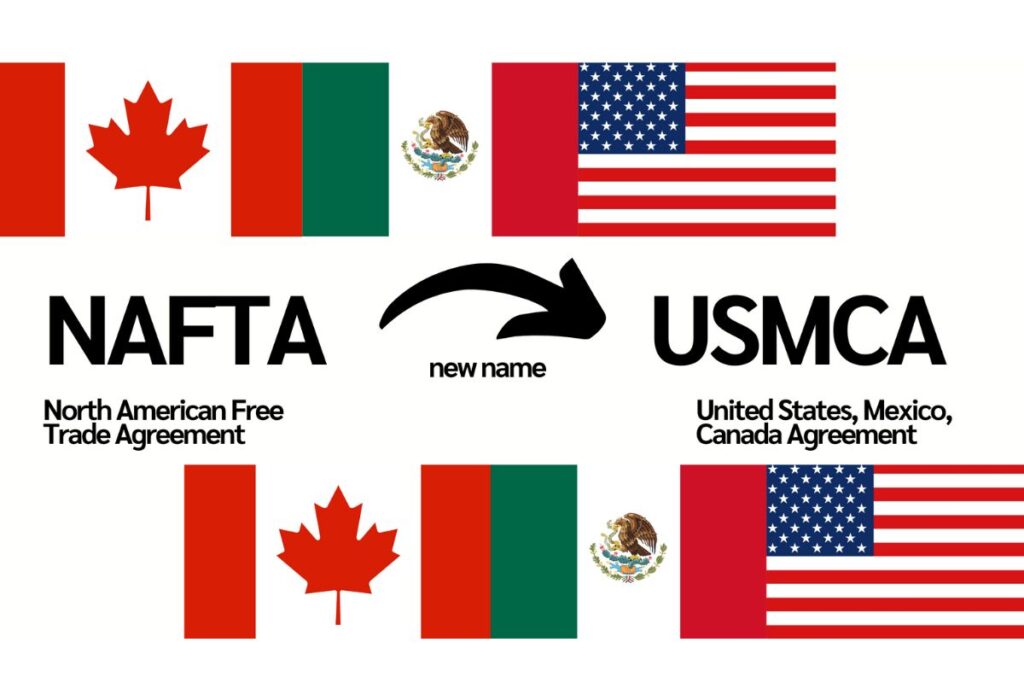This hard-hitting article exposes the hidden flaws and devastating impacts of the USMCA (United States, Mexico, and Canada) on Mexico’s natural resources and environmental defenders. Through a critical lens, it highlights the consequences of weak enforcement and exploitation, calling for a more just and sustainable trade agreement.
NAFTA was first signed into law by President Bill Clinton in 1994. The agreement aimed to eliminate trade barriers between the United States, Canada, and Mexico, thereby fostering economic integration and growth among these countries.

One of the significant changes brought by NAFTA was how it altered American consumption patterns. For instance, avocados became one of the most successful imports. In 1994, the average American consumed only 1 pound of avocados per year. By 2014, this had increased to 7 pounds per person. Before NAFTA, avocados were banned due to protectionist policies, but the treaty lifted these restrictions, boosting demand. This not only improved the American diet but also significantly benefited the Mexican economy.
Trade agreements like NAFTA operate on the principle of comparative advantage, where countries focus on producing goods, they are best at and trade for others. The US excels at growing corn and exports large quantities to Mexico, while importing avocados in return. Despite Mexico’s rich biodiversity in corn, hosting over 59 unique varieties integral to its cultural heritage, US corn—genetically modified and high in starch—dominates the market. This shift raises health concerns, as excessive consumption of such corn can spike blood sugar levels and hinder weight loss.
When NAFTA was signed, the balance of low-skilled labor between the US and Mexico was significantly skewed. Mexican labor was up to 40% cheaper than that in some Asian countries. Companies moving operations to Mexico could save 40-50% on labor costs alone, not to mention savings on overhead costs like real estate and utilities. This economic dynamic led to the disappearance of manufacturing jobs in the US, illustrating both the pros and cons of the treaty. While a small group in the US benefited from lower costs, the broader question remains: was it worth the trade-oX?
Cheaper labor means jobs move to Mexico, but at what cost?
NAFTA, and its successor USMCA, were framed as free trade agreements. However, if free trade requires a treaty, is it truly free? These agreements were supposed to boost Mexico’s economy, but the agenda has largely been driven by the interests of the United States. Although Mexican politicians benefitted, Mexico cannot aXord to close itself oX from foreign trade entirely.
The so-called free trade has many disadvantages, especially the illusion of freedom. The US is the main exporter of energy while Mexico sells it under major restrictions. This creates dependency on the northern neighbor, forced tourism, and a false sense of choice against the strongest country in the world. If the treaty were to disappear, Mexico would suXer the most, as this income is already part of its national budget.
A potential solution would be to renegotiate Mexico’s free trade agreement with the US and Canada. However, every new Mexican government claims it will improve the agreement, only to fall short. Despite the treaty’s benefits, like improving manufacturing quality and reducing bureaucratic procedures, it falls short in key areas. The updated agreement, USMCA, signed by President Trump, didn’t address significant issues like climate change.
Article 13 and Its Implications
Behind the Veil of the USMCA: Environmental Exploitation and the Silencing of Mexican Activists
The North American Agreement on Environmental Cooperation (NAAEC), the environmental side agreement to NAFTA, has seen updates with the USMCA. The new Environmental Cooperation Agreement (ECA) signed alongside USMCA includes more robust environmental obligations. Yet, it still requires the US to import food that doesn’t meet its safety standards and imposes limits on regulating online monopolies regarding consumer privacy and liability for fake information or counterfeit products.
A particularly troubling aspect is Article 13 of the NAAEC under the USMCA. This article explicitly excludes the Secretariat from preparing reports on issues related to a Party’s failure to enforce its environmental laws and regulations. This exclusion is especially concerning in Mexico, where weak enforcement of environmental laws has led to rampant resource exploitation. The inability of the Secretariat to report on non-compliance means critical enforcement gaps remain unaddressed, perpetuating environmental degradation and social injustice. This loophole undermines eXorts to protect the environment and emboldens those who exploit natural resources without accountability. In a country where environmental defenders are at high risk, this lack of oversight further endangers activists and communities striving to protect their land and resources.
Silent SuIering: Environmental Defenders Under Siege in the Shadow of the USMCA The violent landscape in Mexico against environmental activists is alarming. In 2022 alone, there were 582 registered aggressions against environmental defenders and communities, according to the Mexican Center for Environmental Law. Mexico remains one of the most dangerous countries for environmental activists, along with Brazil and Colombia. Environmental defenders, who protect the right to a healthy environment, face life threatening dangers.
“We are not criminals, we defend life and nature”Mapuche Cosmovision.
Secrecy and lack of transparency are enemies of democracy, a democracy that these three governments proudly claim to uphold. The right kind of trade agreement, one that addresses the climate crisis and income inequality, would distribute production more broadly around the world, reducing the need for long-distance shipping and centralized production, which currently threaten the climate. The rules of trade determine where investments happen and who the winners and losers are. This version of NAFTA, while flawed, is the starting point from which we must strive to create agreements that truly prioritize people and the planet.
The extraction of natural resources is part of the metabolic function of global capitalism, known as mega-extractivism or neo-extractivism. This model, which perpetuates forms of colonialism, is driven by macroeconomic strategies of neoliberal governments, sacrificing real economies and exploiting natural resources for exportable surpluses.
These practices internalize negative externalities at the expense of the overexploited natural resources
(Marco Rojas 2016).
Defending the earth, defending mother nature is not a crime.
To conclude, the USMCA, despite its updates and promises, continues to facilitate the exploitation of Mexico’s natural resources. Environmental defenders in Mexico face significant threats, and Article 13’s limitations prevent meaningful oversight and enforcement of environmental laws. This treaty, while beneficial in some respects, highlights the ongoing struggle for a fair and sustainable trade system that truly benefits all parties involved.























